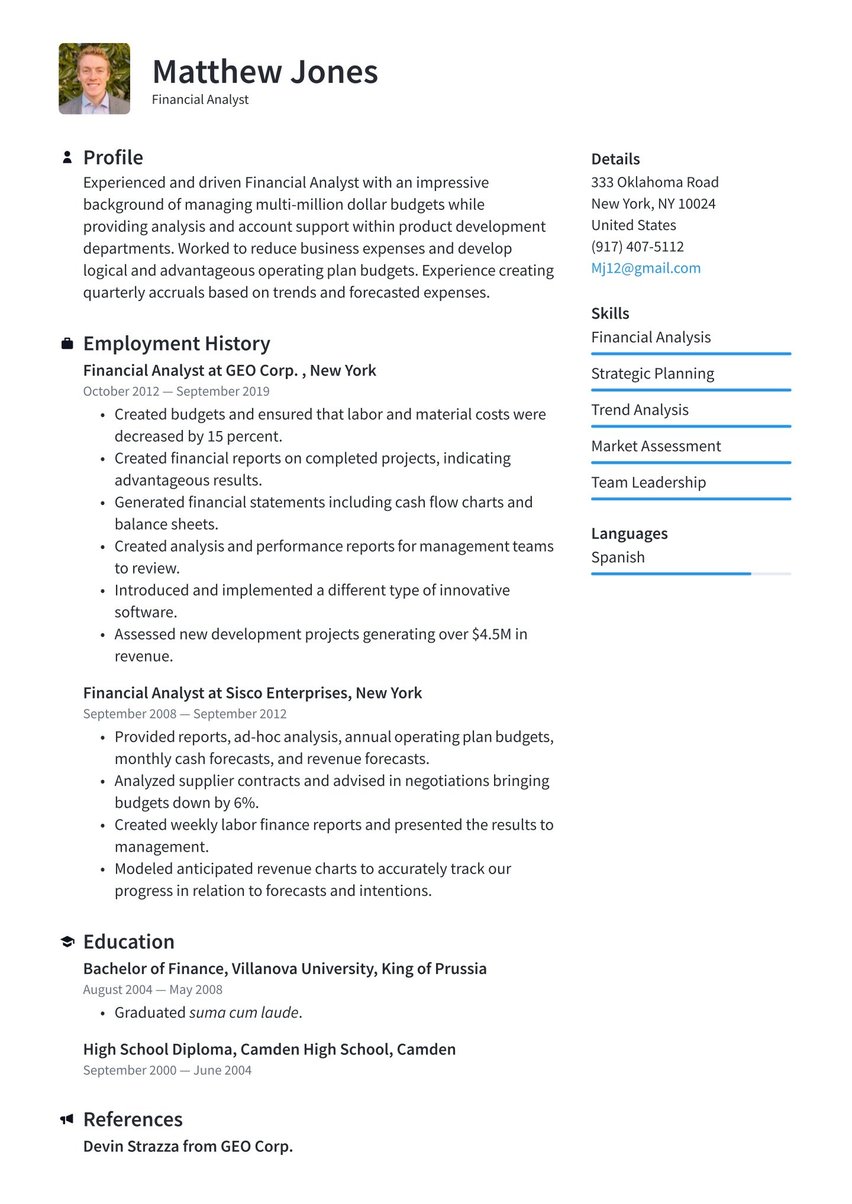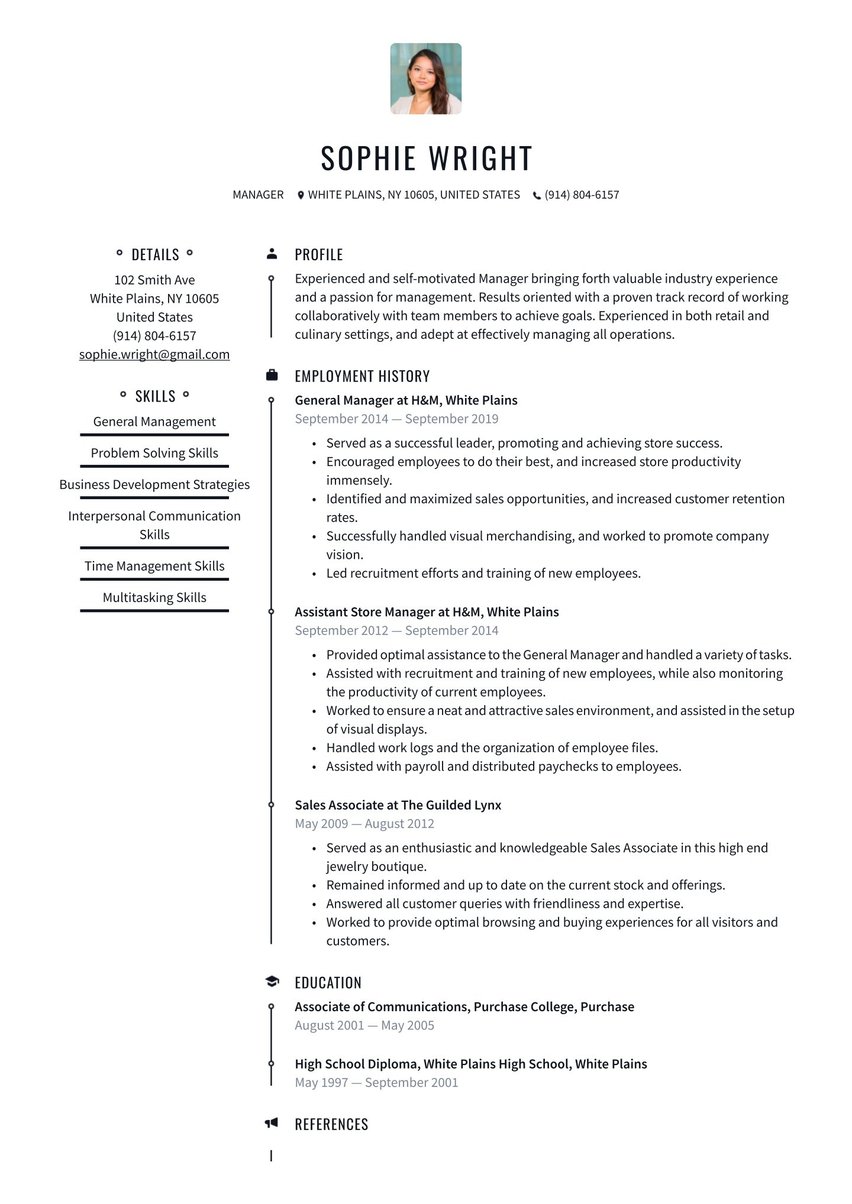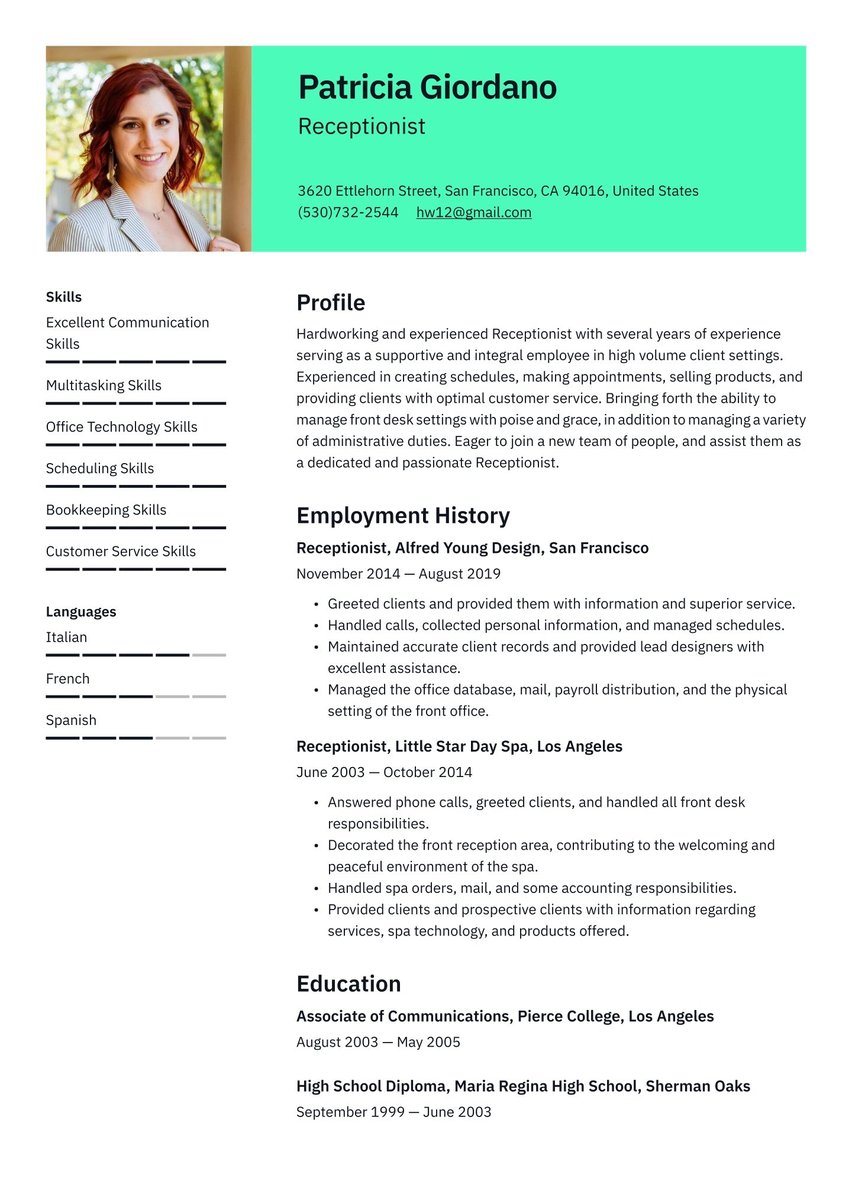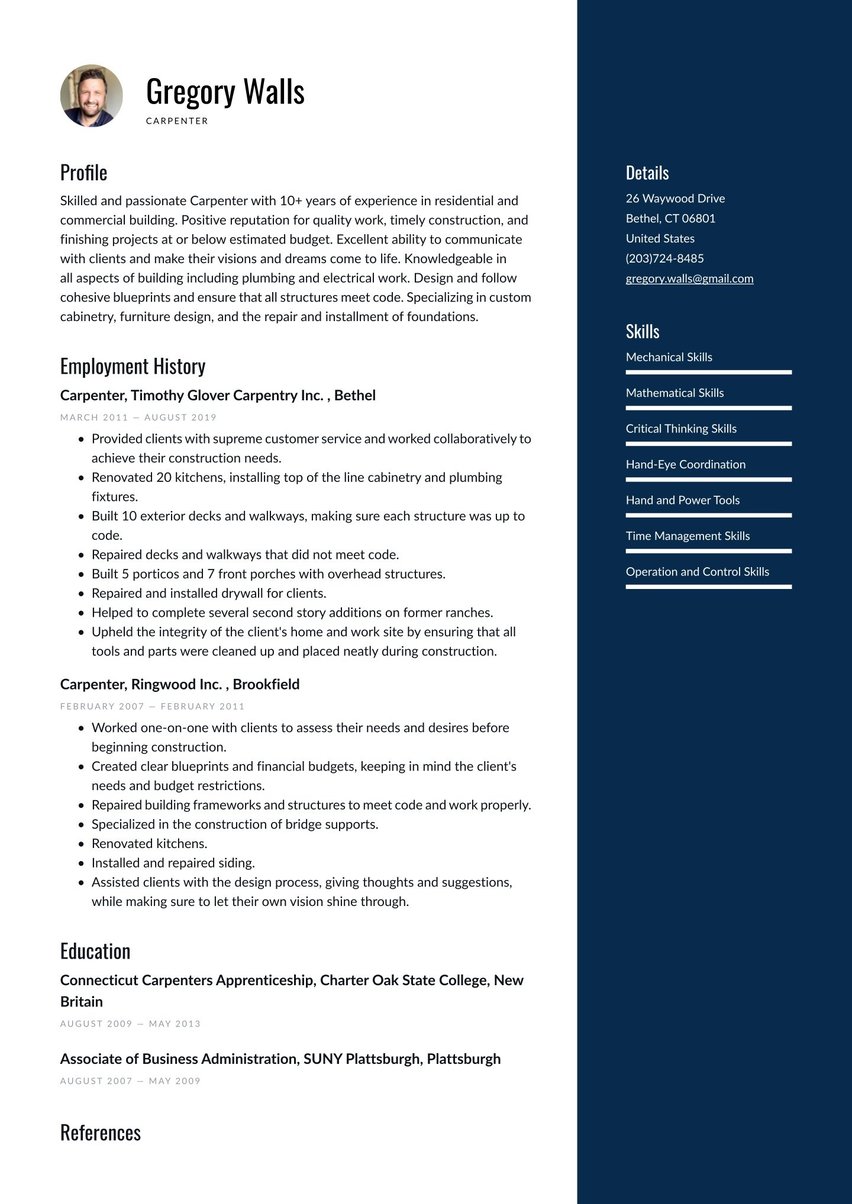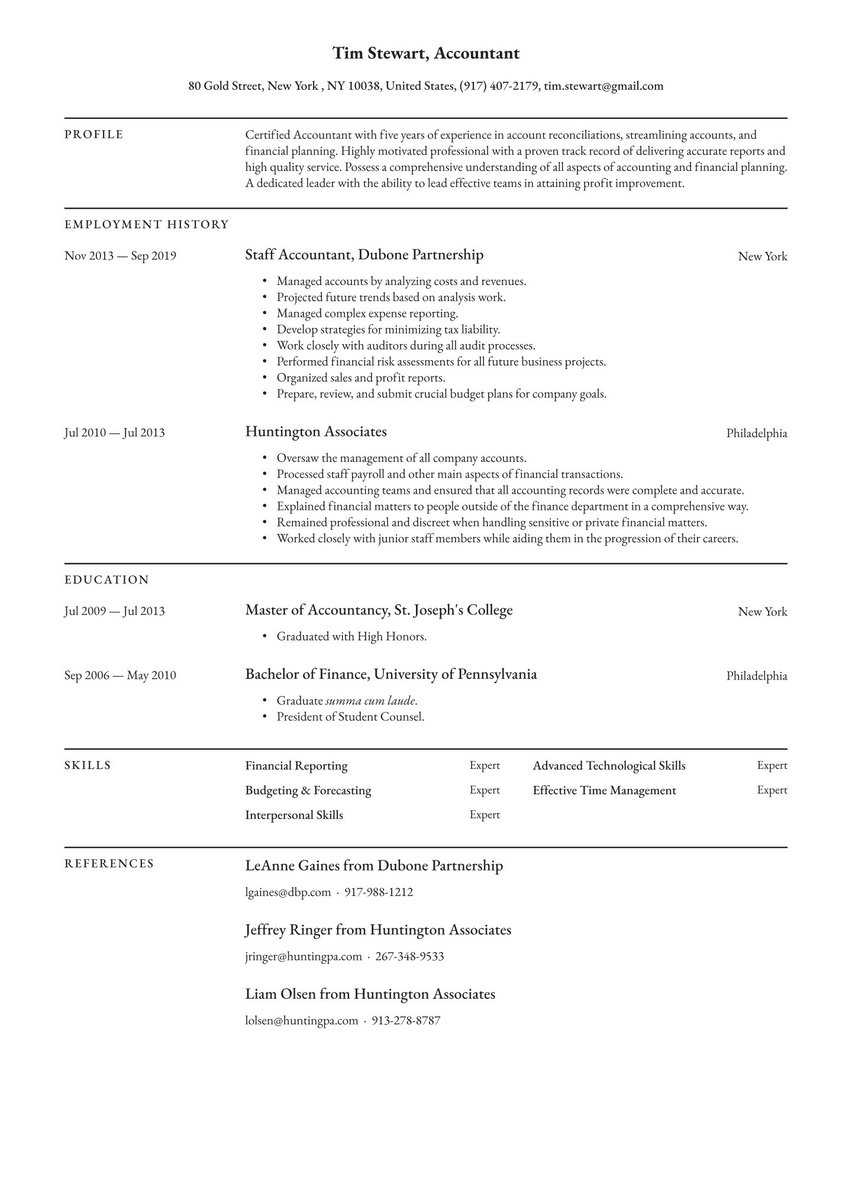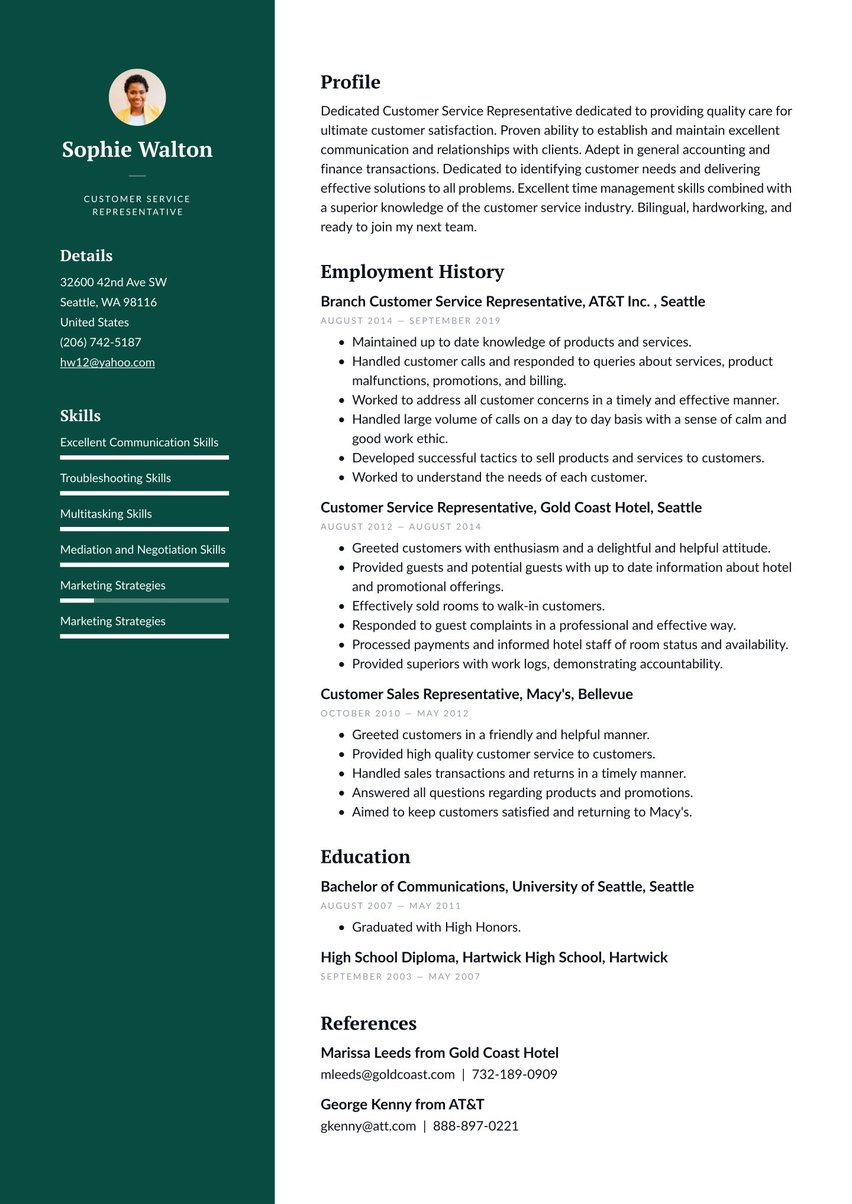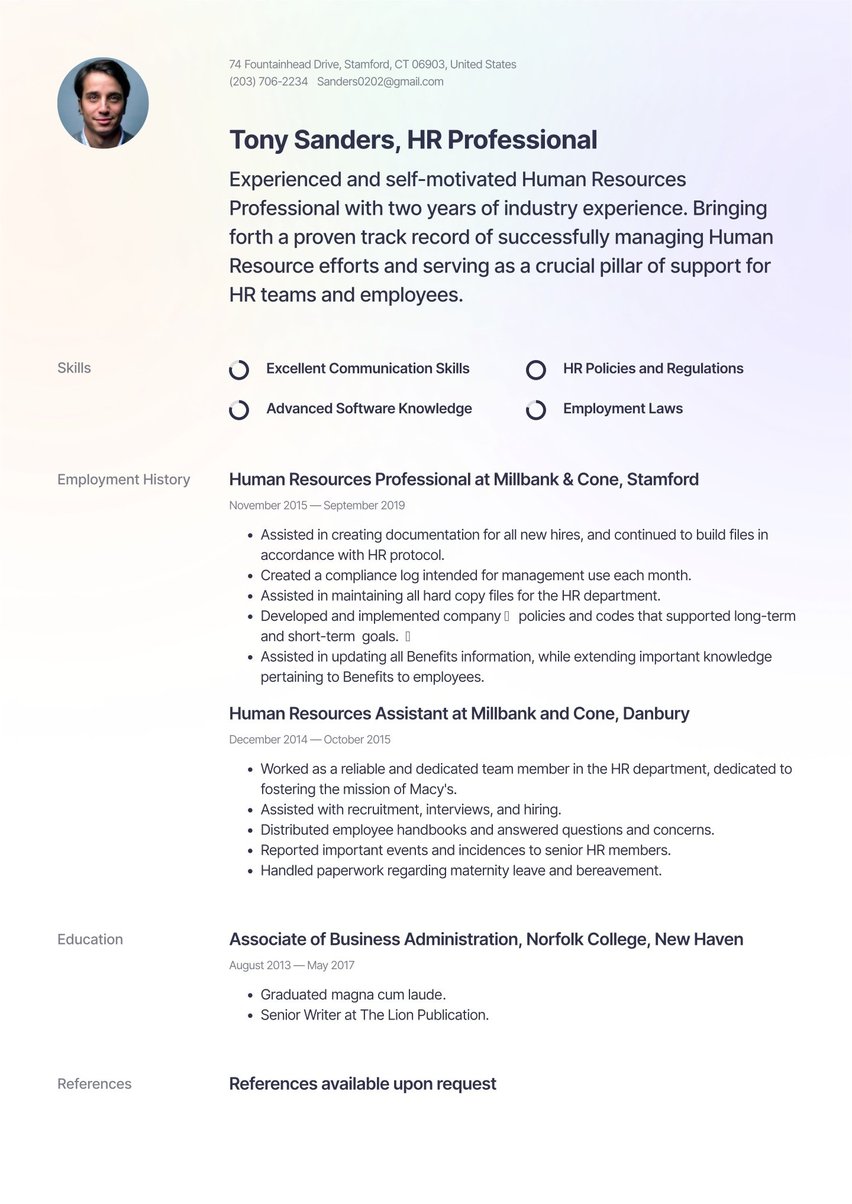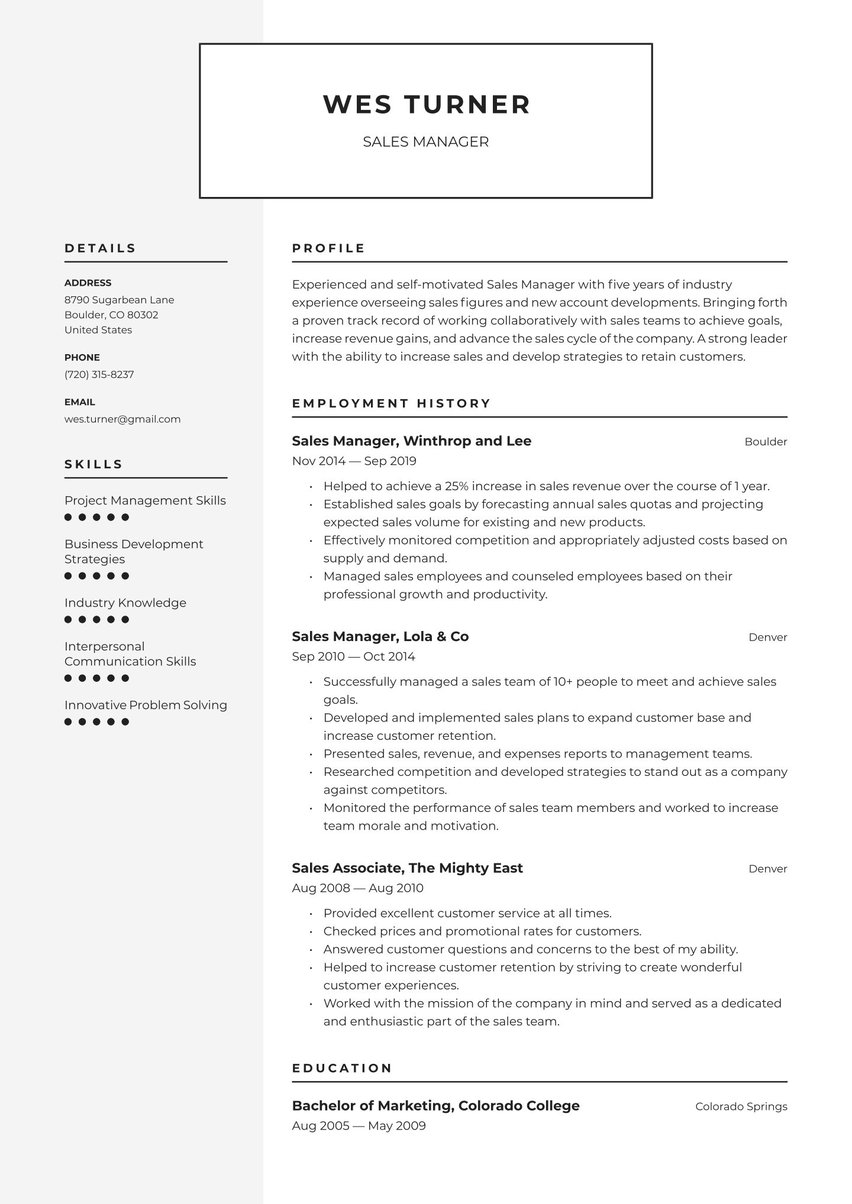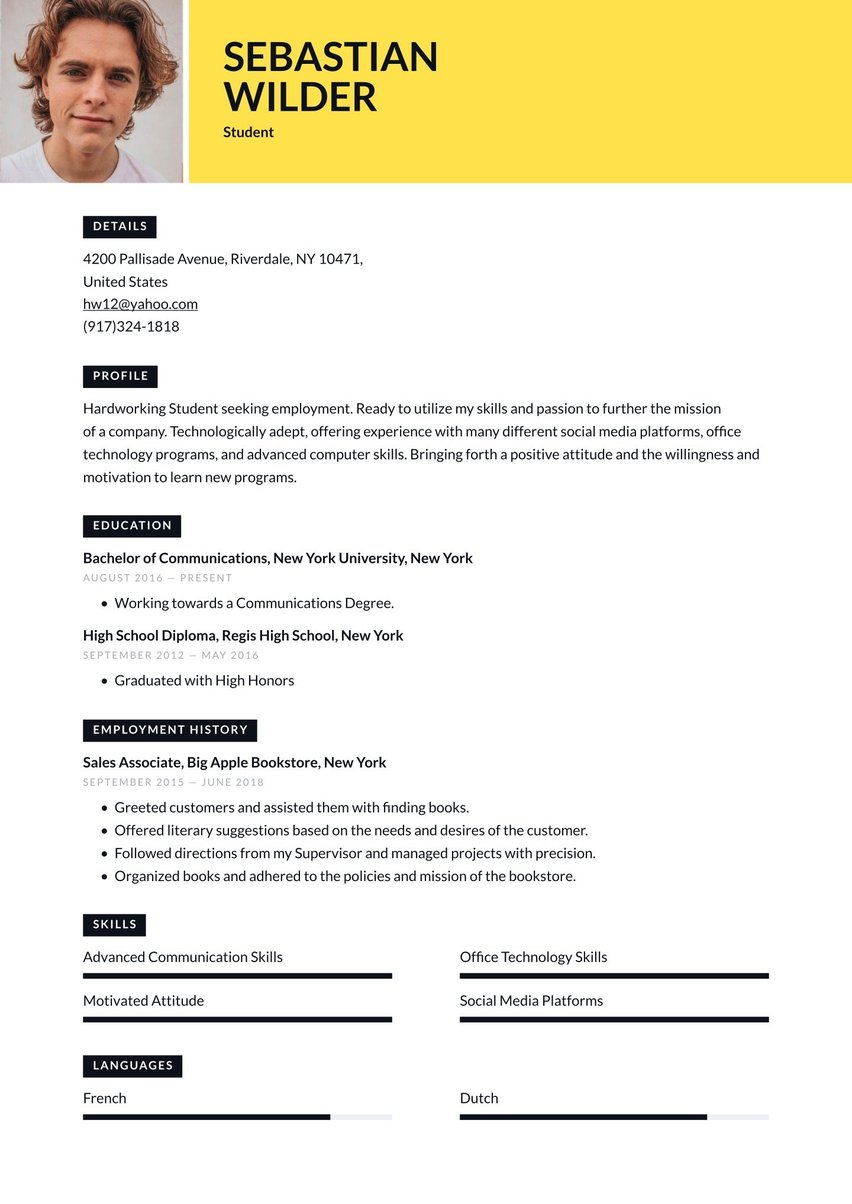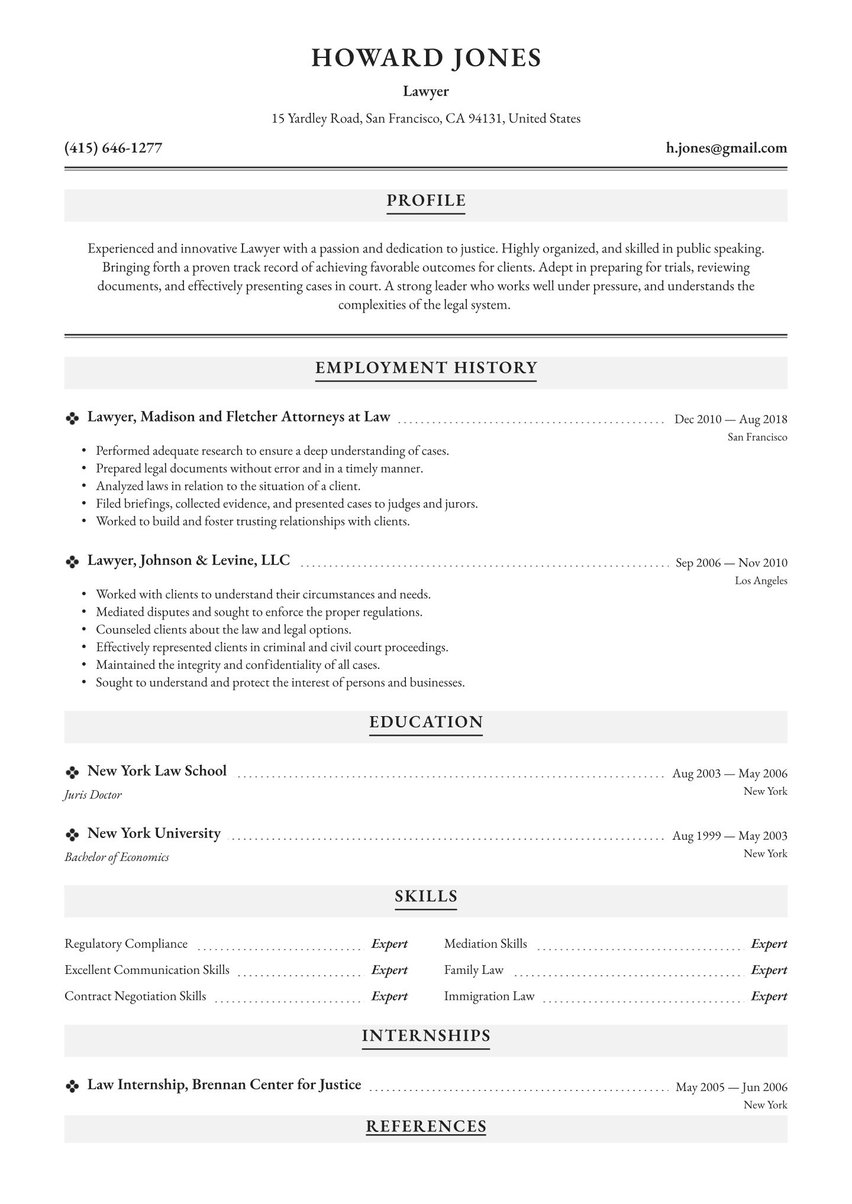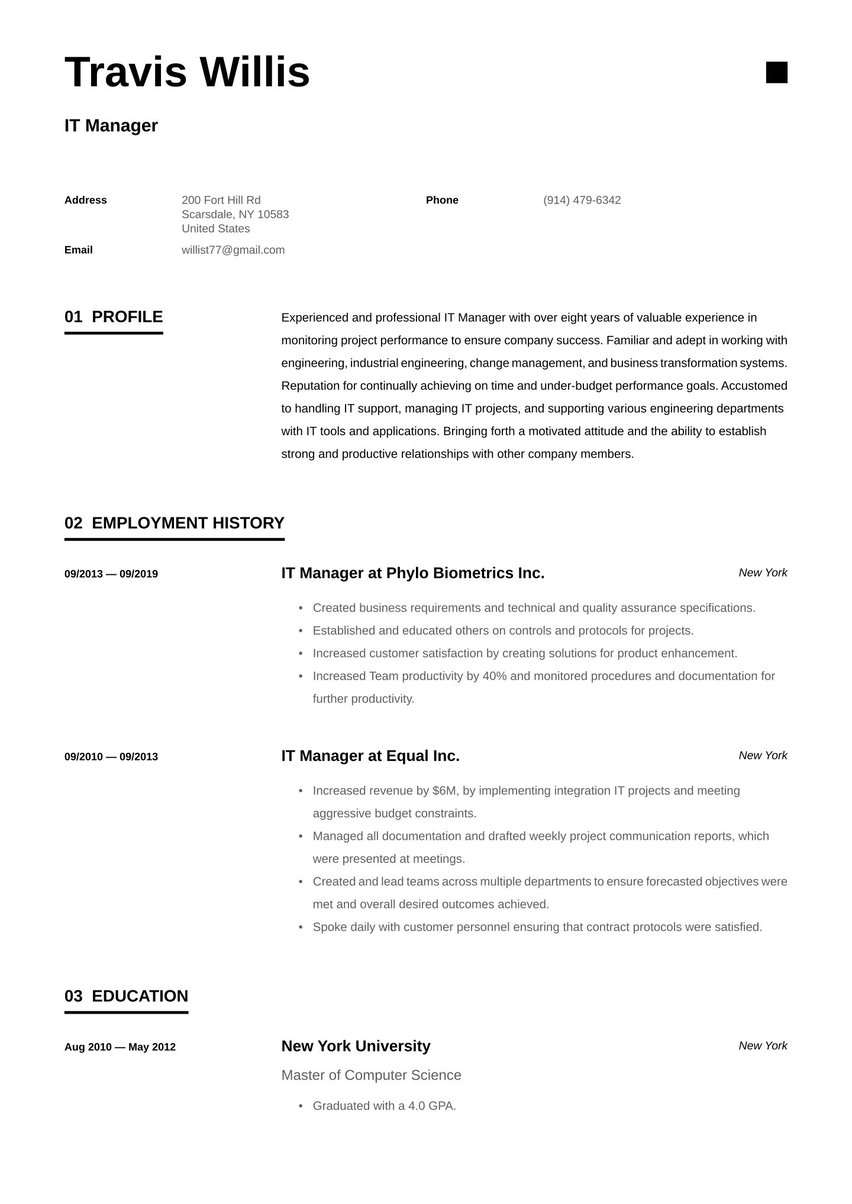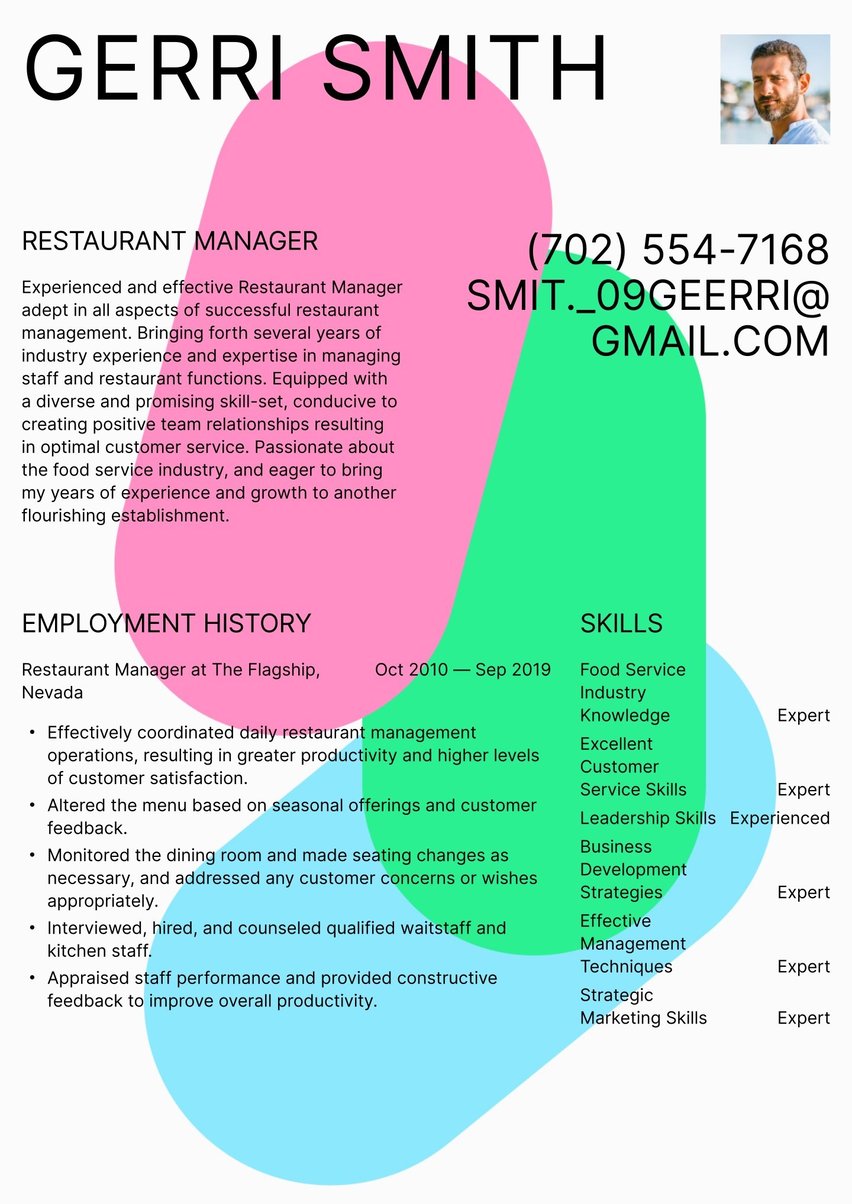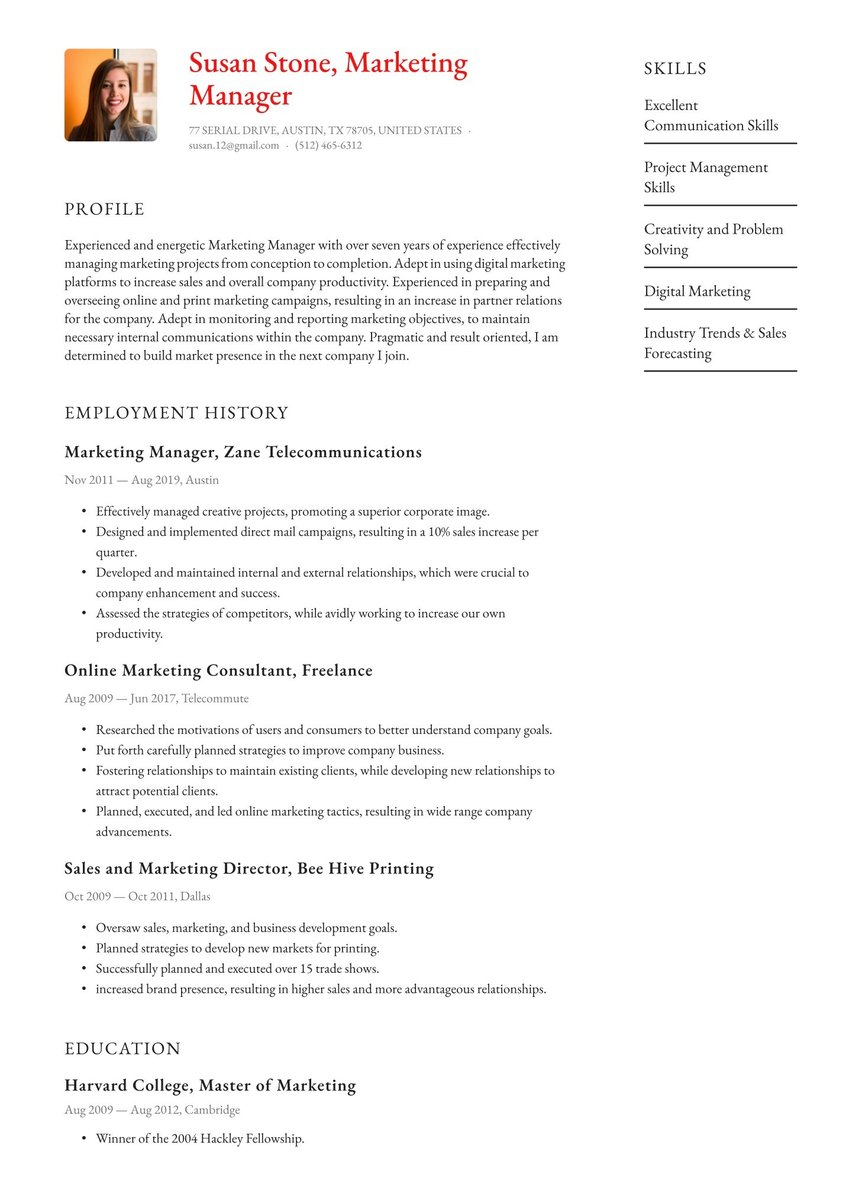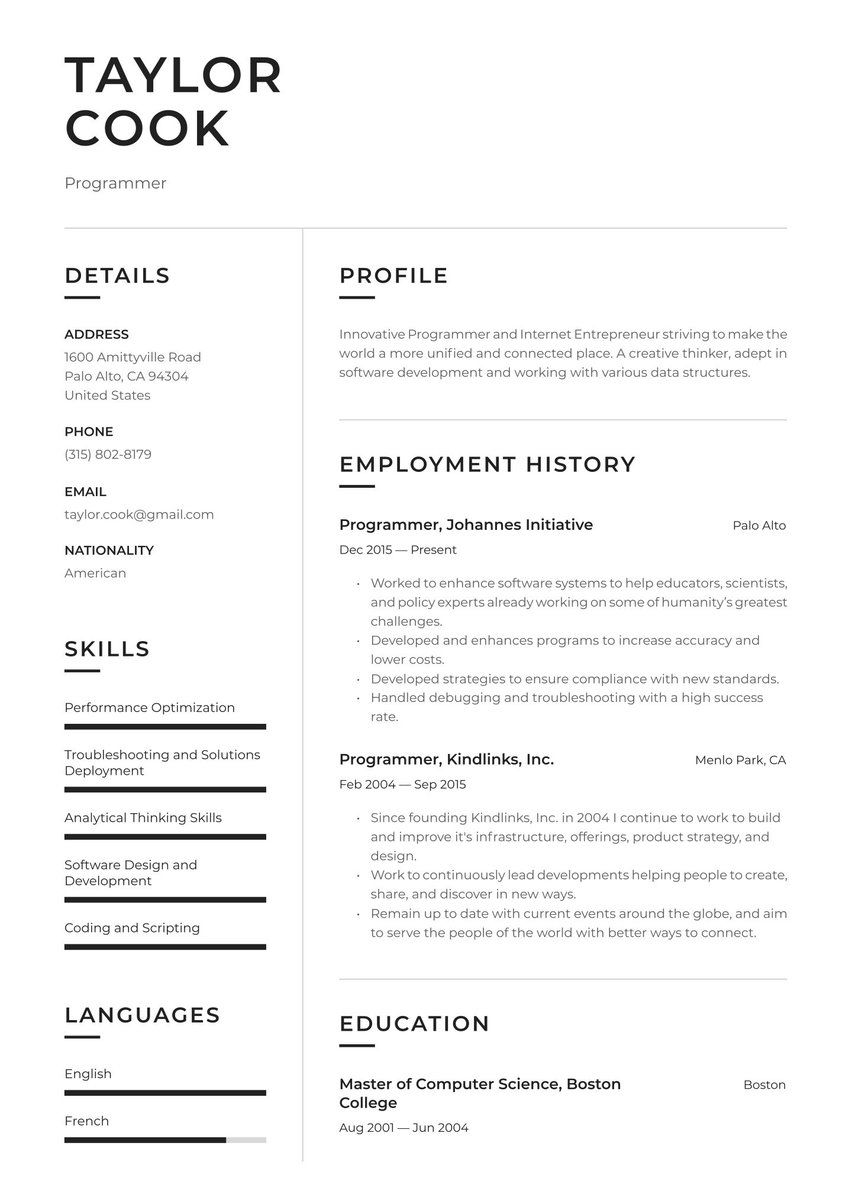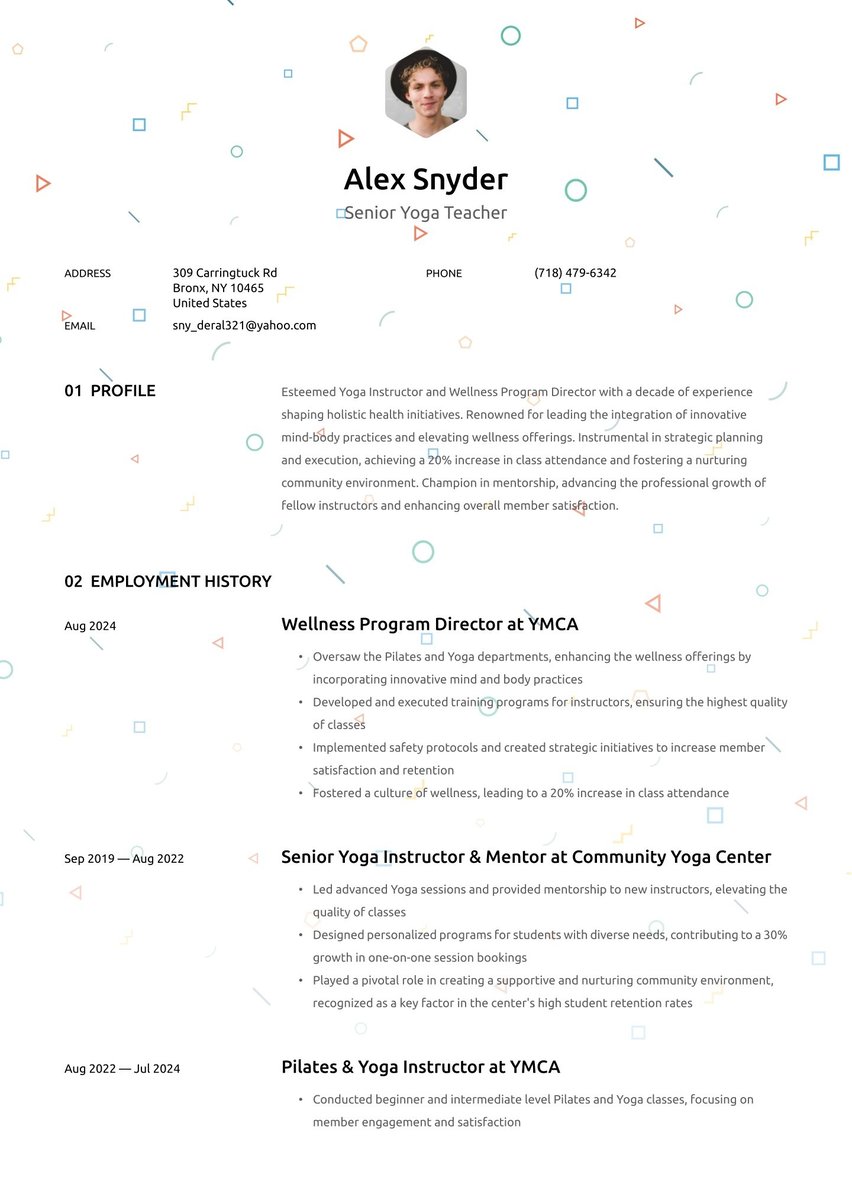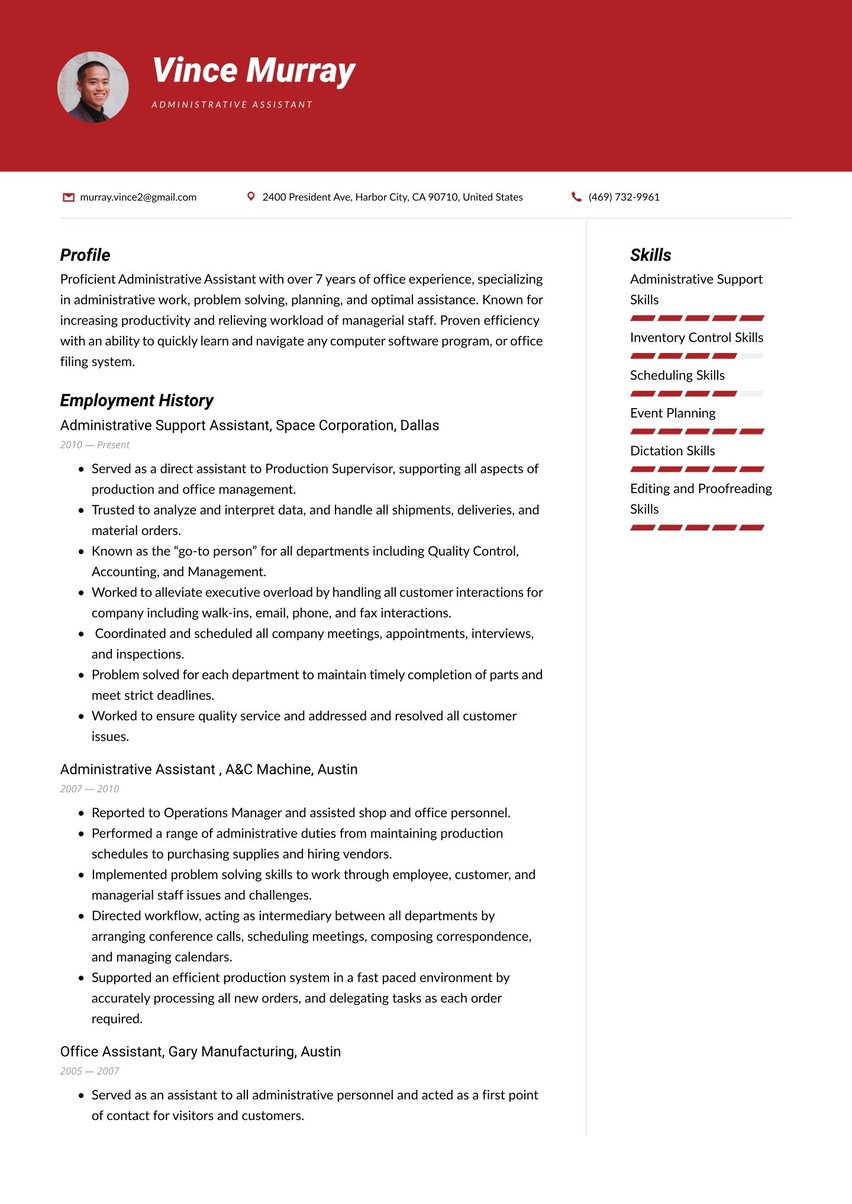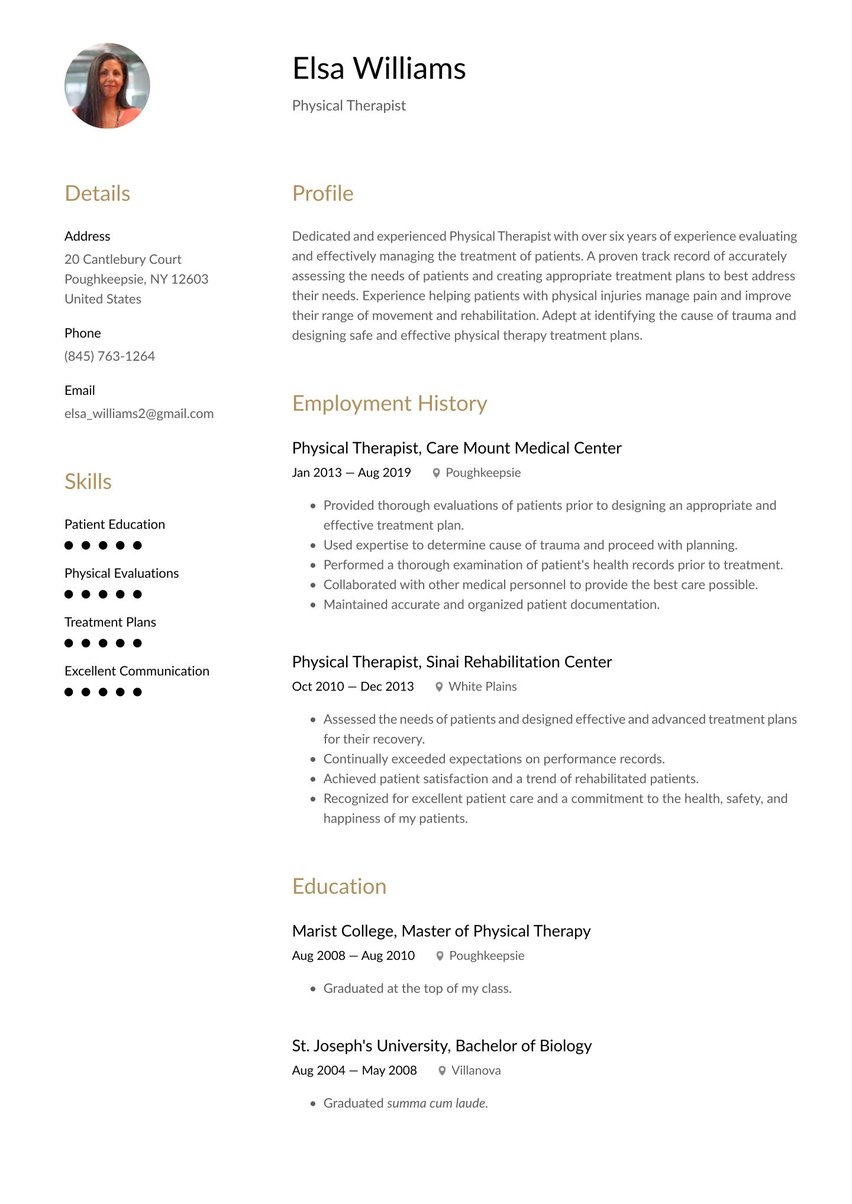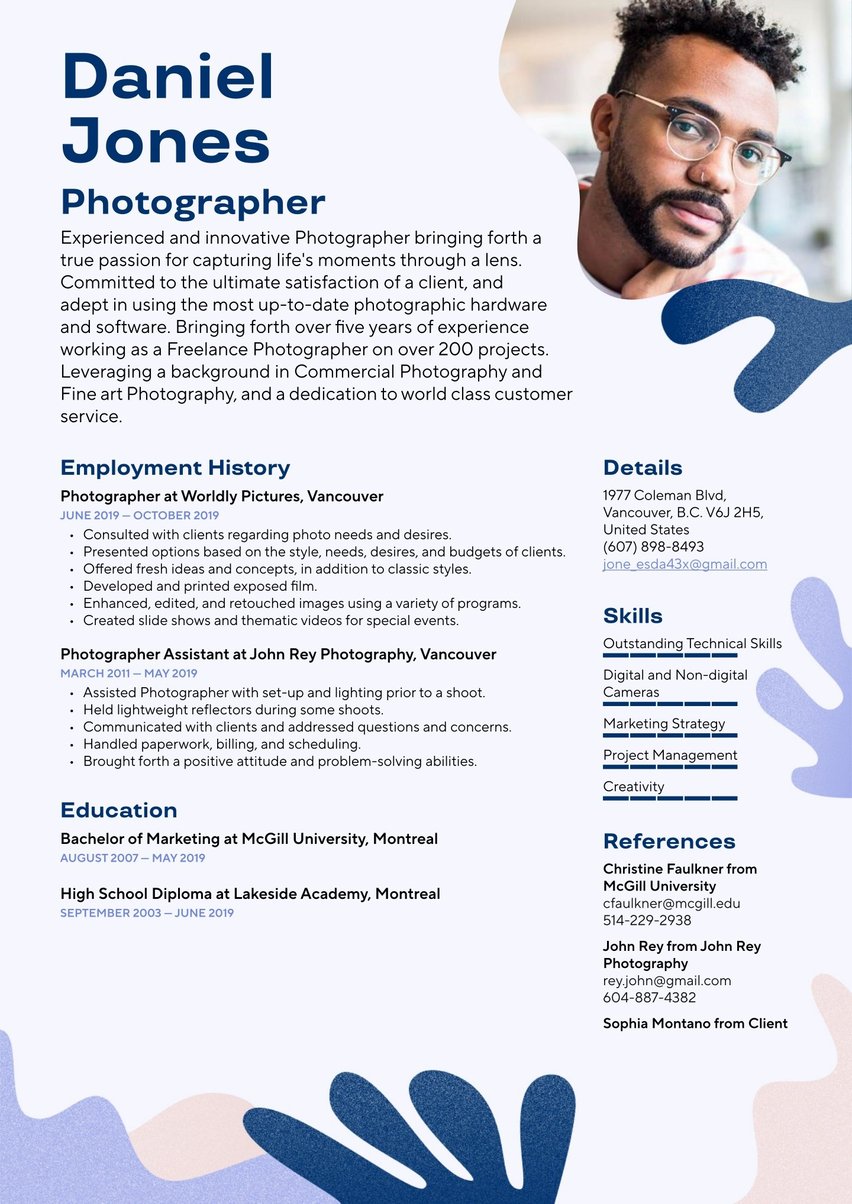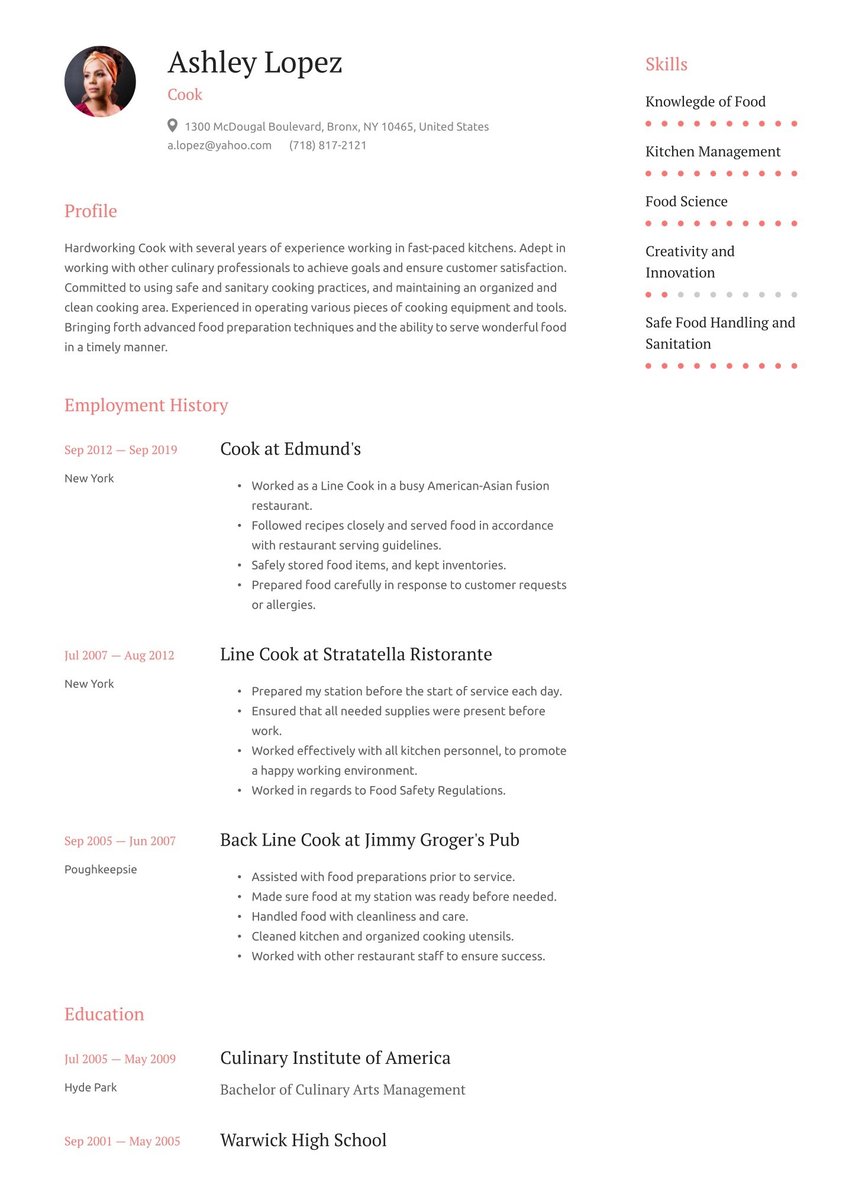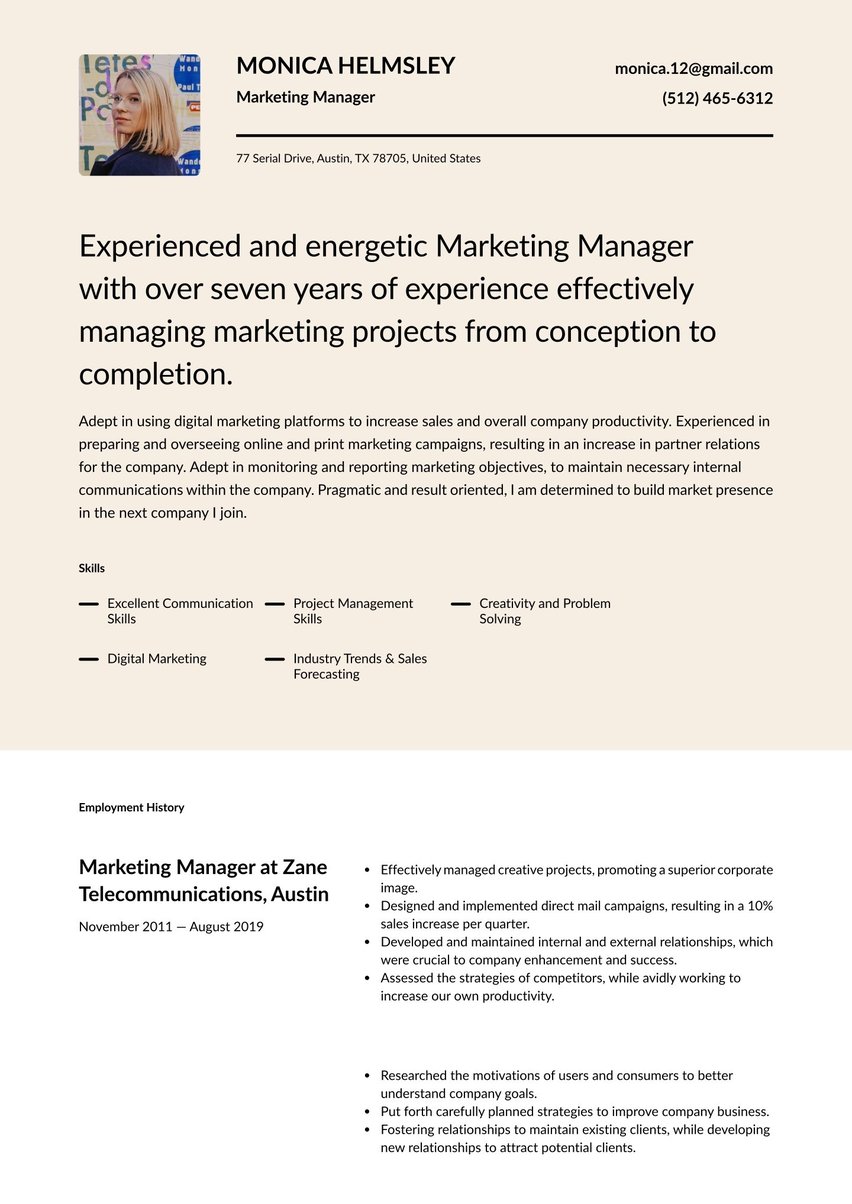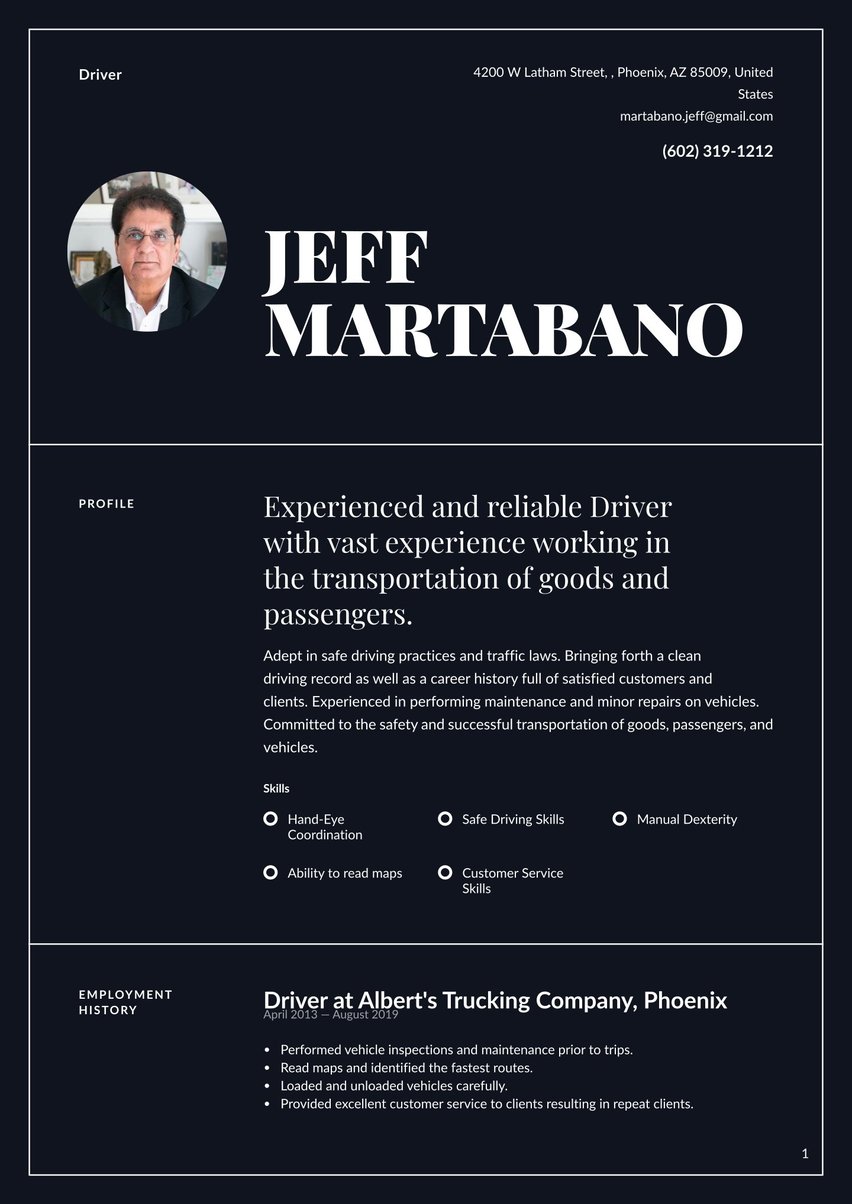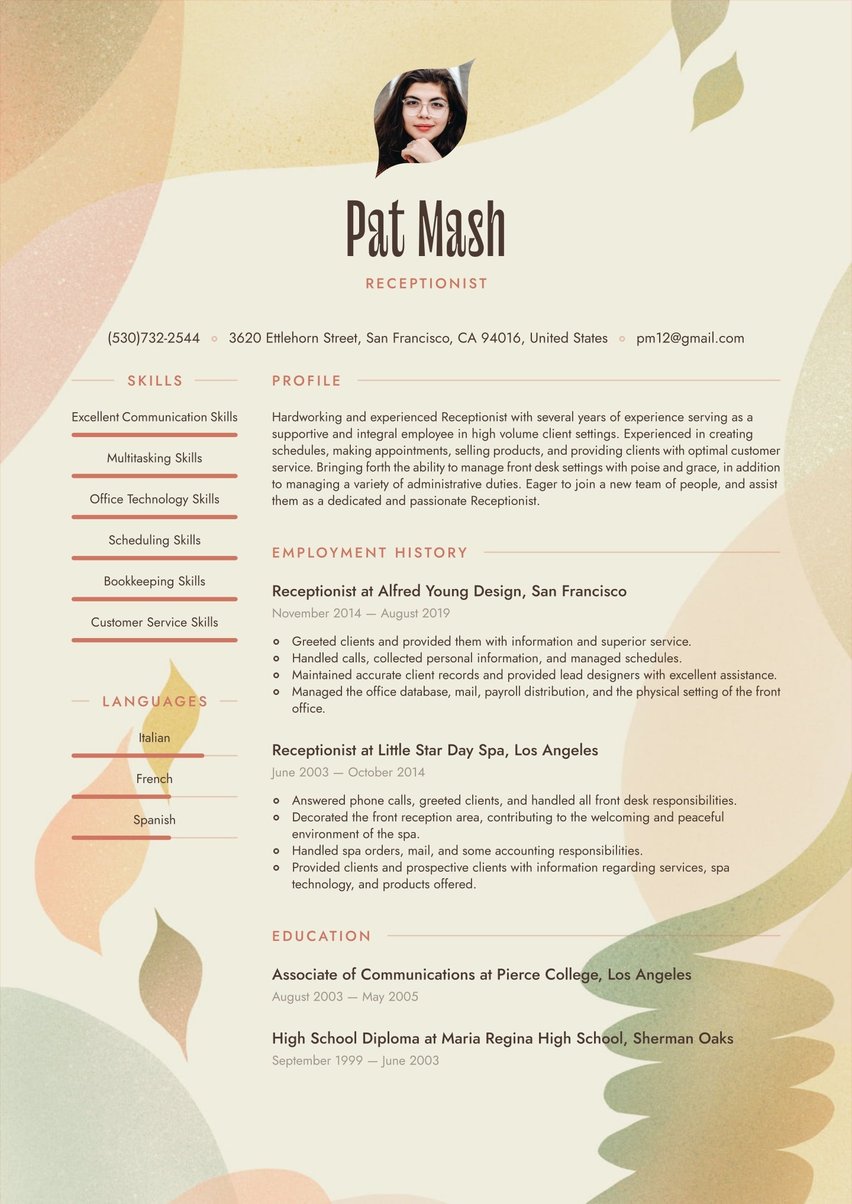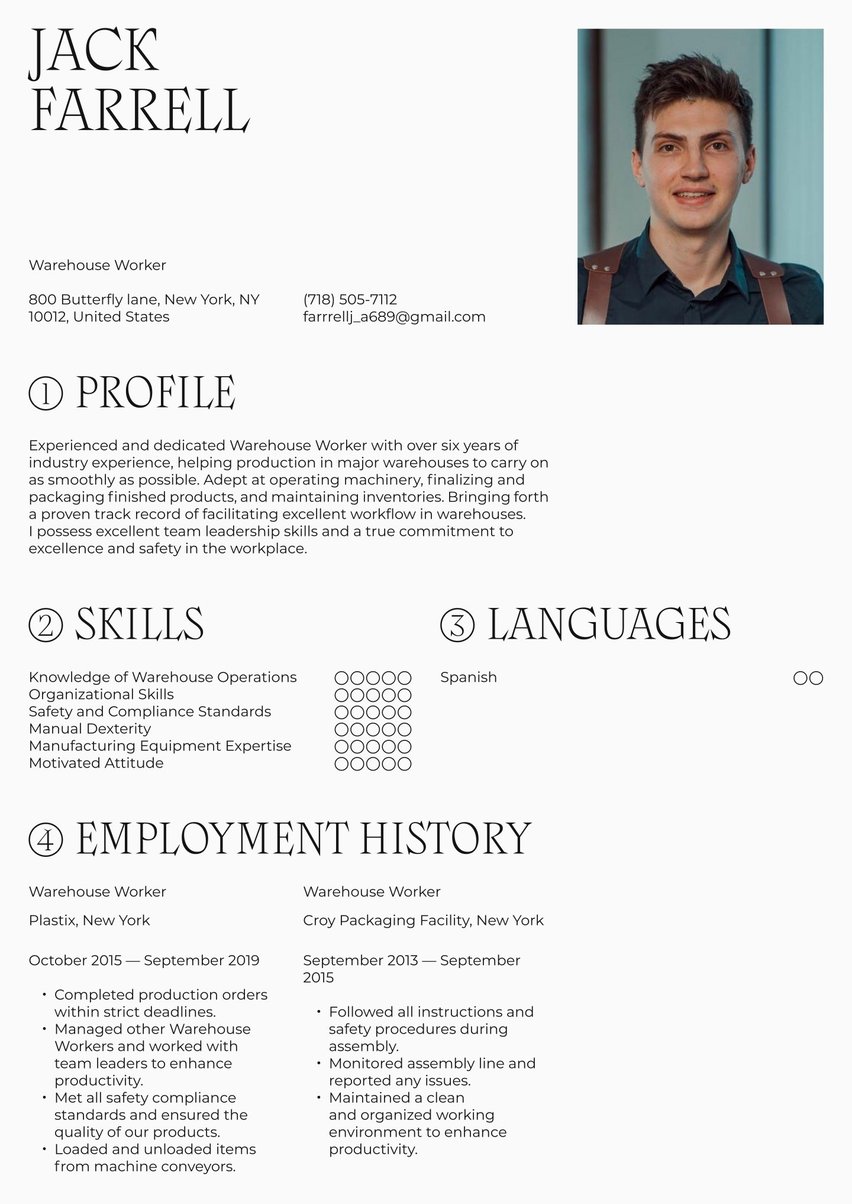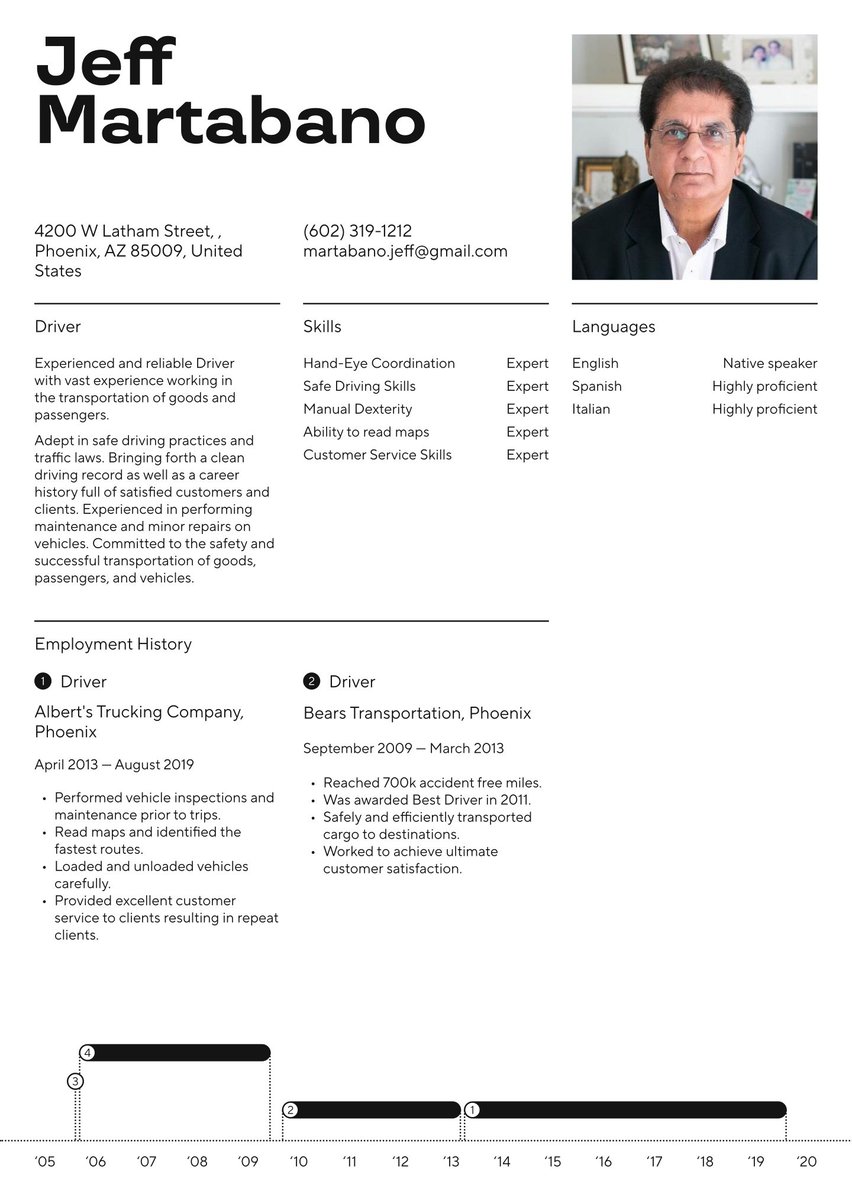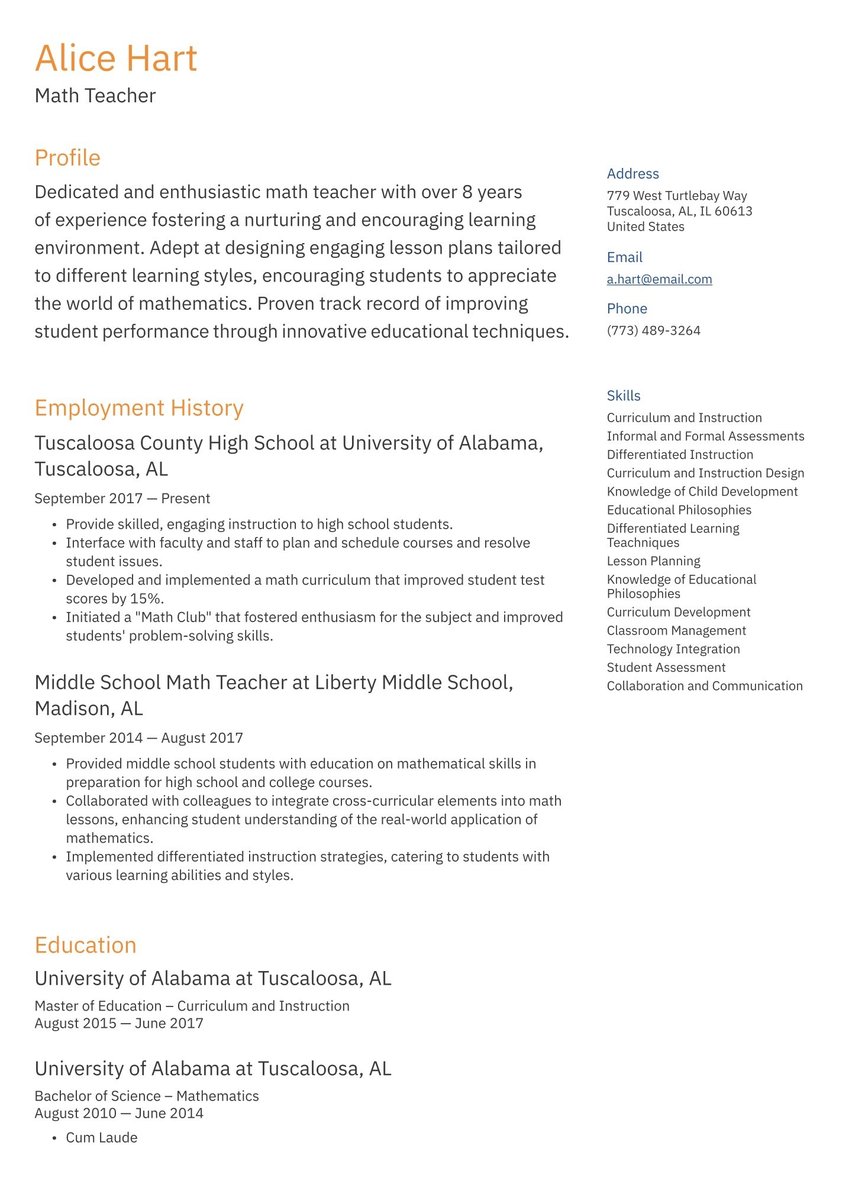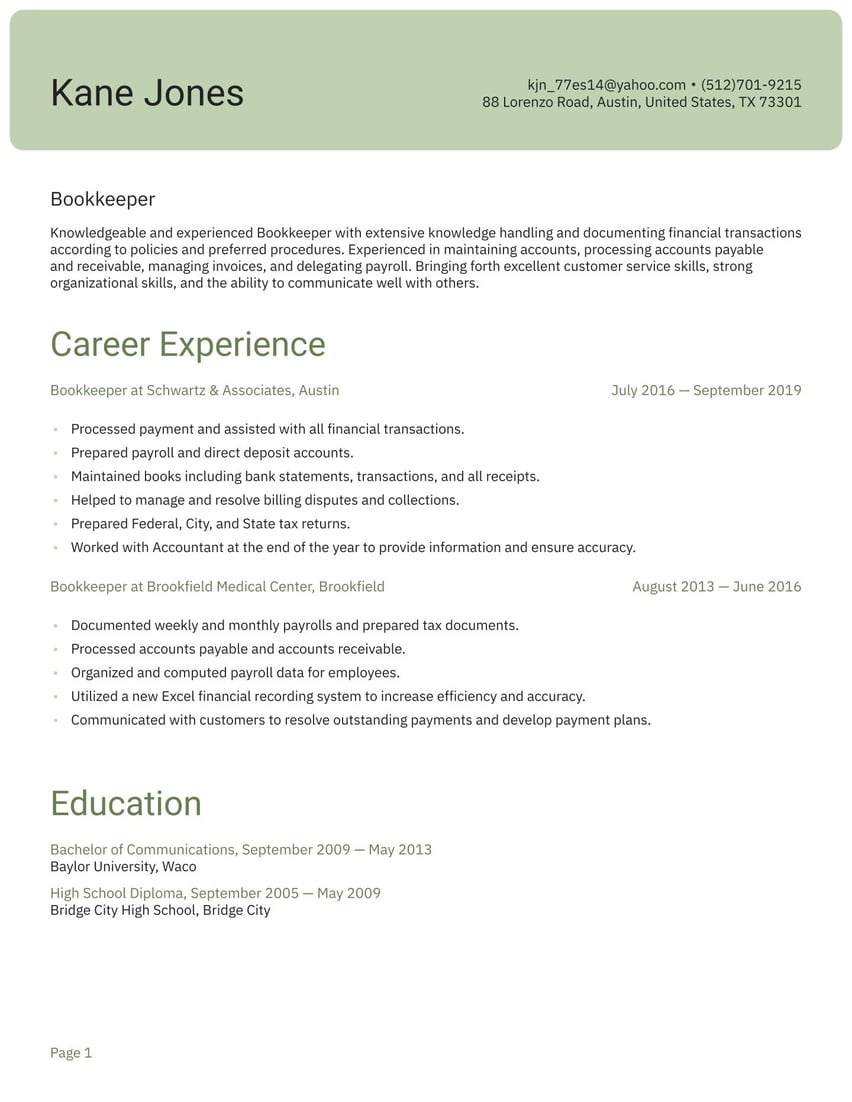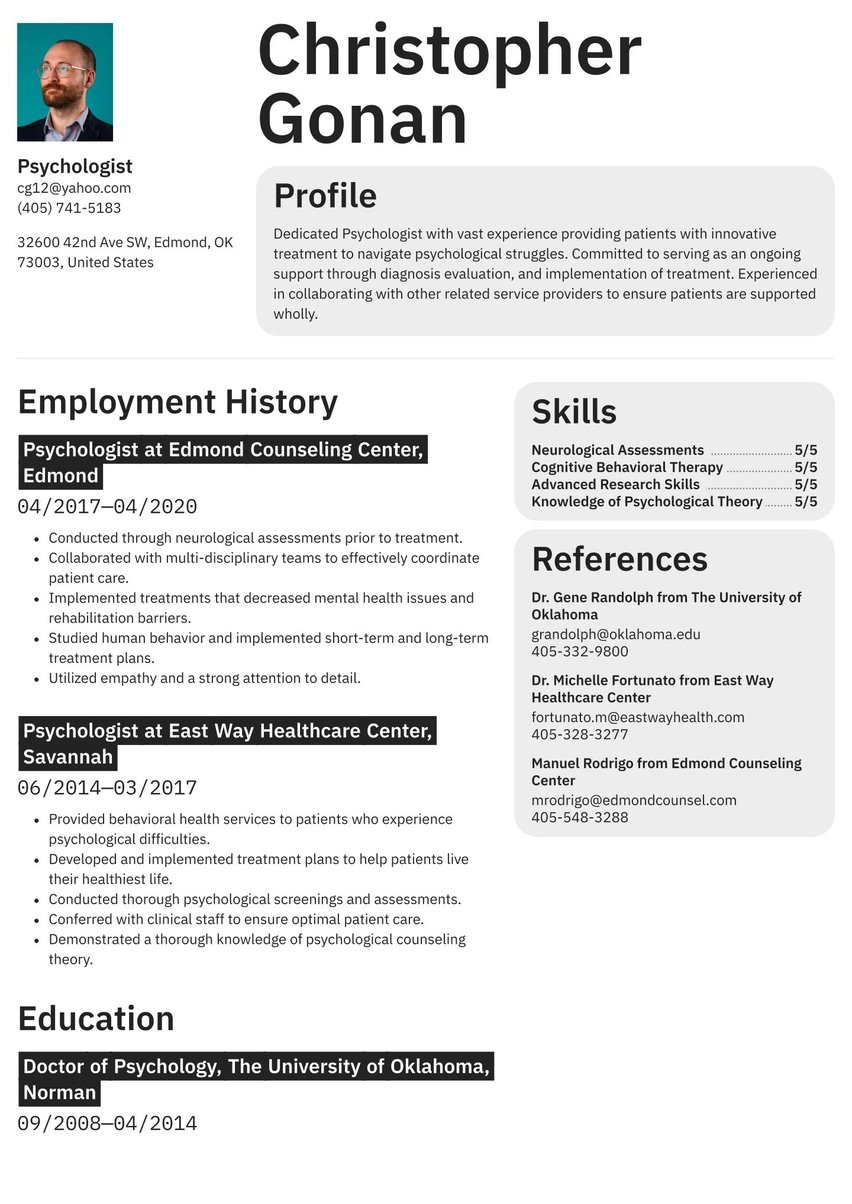As a film producer, you’re the glue that holds the entire production together. Whether it’s deciding on the final script, talent or budget, you’re making big-picture decisions to get your film off the ground. In this competitive and ever-evolving field, you’ll need an awesome resume that conveys your strengths and highlights your successes.
Luckily, we’re here to help. With 300+ resume examples and writing guides, Resume.io is an expert-resource for job seekers in all fields and at all stages of their career. In this guide, along with the corresponding film producer resume example, we’ll take a look at the following topics:
- What does a film producer do?
- How to write a film producer resume (tips and tricks)
- The best format for a film producer
- Advice on each section of your resume (summary, work history, education, skills)
- Professional resume layout and design hints.
Ready... and action!
What does a film producer do?
A film producer handles all aspects of managing a film’s production from initial concept to distribution of a finished movie.
What a film producer actually does depends a lot on their experience level, the budget of the production and the type of media or film they are producing. Some different tasks a film producer may take on include:
- Searching for source material or obtaining rights for film scripts
- Creating a budget for all phases of production
- Securing funding for the film through investors and other means
- Assembling a production team including directors, actors, technical personnel and editors
- Serving as an intermediary between the production studio, funders and the creative team
- Troubleshooting monetary or staffing problems that may arise during production
- Overseeing the post-production or editing phases
- Landing distribution deals to make sure the film is seen by the widest audience possible
How to write a film producer resume
Like an solid resume, your CV will need the same basic sections hiring managers expect to see, including:
- The resume header
- The resume summary (aka profile or personal statement)
- The employment history section
- The resume skills section
- The education section
You can find more writing tips in our other related resume examples including: costume designer resume sample, cinematographer resume example, screenwriter resume sample, actor resume sample and stage manager resume example.
Choosing the best resume format for film producers
Film producers with a lot of impressive experience or credits to show will likely benefit from the standard reverse chronological resume format. This structure centers heavily on an employment history section where you’ll list your most recent productions starting with the most recent and working backwards.
Some film producers with specialized skills may find the reverse chronological format too restrictive. In that case, the hybrid structure may be a better option. This format begins with a “Skills” or “Experience” section where you can highlight areas of expertise before including a shorter “Employment History” section.
The functional resume format is reserved for rare cases because it can make job seekers come across as inexperienced.
Resume summary example
The resume summary is like your highlight reel: These 3-5 sentences allow you to express your biggest accomplishments, attributes, personality and goals. The summary, also known as the profile, should capture the hiring manager’s attention while saving the details or any less relevant information for further down.
Check out the summary from our resume example below.
Passionate Senior Producer experienced in Documentary and Independent Filmmaking. Adept in overseeing all aspects of production and effectively guiding production teams during the film process.
Employment history sample
The employment history section will likely list the film producer’s most impressive credits or projects. While job seekers in other careers will often list all relevant positions so as not to leave gaps in their work history, a film producer may pick and choose the projects they are most proud of to save space here.
Under each job title, make sure to include a few bullet points to show your accomplishments in the project. Action verbs along with numbers and statistics can show the impact you had.
Check out the employment history from our resume sample below.
Executive Producer, Ty & Beau Productions, Los Angeles
January 2019
- Brought forth unrelenting creativity, vision, and dedication to films.
- Effectively managed pre-production planning including working out budgets, scheduling auditions, hiring crew, and obtaining any necessary permits.
- Participated in the cast selection process alongside film crews.
- Helped to establish financial and design aspects of productions.
- Passionately promoted films by utilizing avenues such as film festivals, advertisements, and interviews.
Associate Producer, "Eager to Be" - Short Film
November 2014
Associate Producer, "Mono"- Documentary
July 2011
Executive Producer, "The One Who Got Away" - Short Film
August 2009
Assistant Producer, "Be Aware" - Feature Film
October 2006
CV skills example
The CV skills section is the place to show off a balance of hard skills and soft skills needed for the new project you hope to take on. Make sure to create a coherent feel with the rest of your resume, while using direct language from the job description on this part of your CV.
Here’s the skills section from our resume example.
- Communication Skills
- Content Development
- Leadership
- Filmmaking
- Cinematography
- Directing
Film producer education example
While film producers aren’t required to have a formal degree, any training or education that shows your foundation can go a long way in this resume section. If you’ve completed an advanced degree, you may leave off your high school.
This is also a great place to include any unions and associations you’re part of, along with any awards you’ve won.
Check out the education section from our film producer resume sample below.
MFA, Film & Media Arts, NYU Tisch School of the Arts, New York
June 2005
Bachelor of Arts in Theater Arts, Manhattan College, New York
June 2003
Resume layout and design count
Just as the photography of a film says a lot about it’s quality, the layout of the resume speaks volumes about your professionalism as a candidate. Make sure to keep a balance of white space to text and choose an attractive header that draws attention to your name and contact information. You can minimize formatting issues by using a professionally-designed resume template.
Key takeaways
- Your summary is the best place to convey your biggest films, awards and personality.
- Don’t forget to quantify your experience in the employment history section to show that you were essential to the success of the project.
- Check out our film producer resume sample for more ideas on creating an attractive and functional header.


